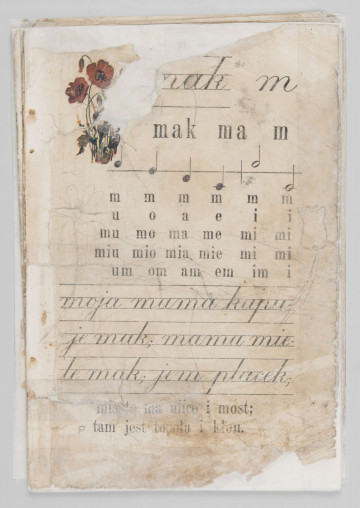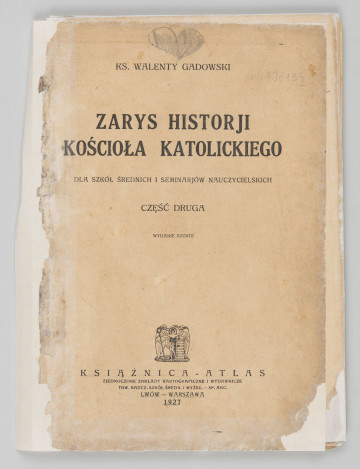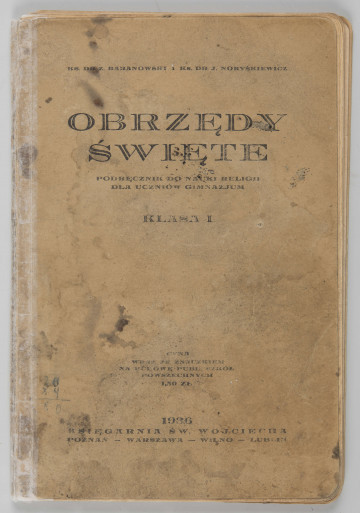
Pre-war primer
1918 — 1939
National Museum in Lublin
Part of the collection: Education and scouting in Lublin
After Poland regained its independence in 1918, the Polish Philological Society, which originated from the Lviv Philological Society, was founded to bring together teachers from secondary schools and universities. The association aimed to defend and promote classical languages, the teaching of which began to decline at the turn of the 19th and 20th centuries due to the replacement of classical gymnasia with real grammar schools. That involved the abolition of the teaching of Greek and a significant reduction in Latin lessons. There were quite significant differences in young people's educational levels in the reborn Poland, and education was reorganised. In 1932, as the result of the educational reform, 8-year gymnasia were abolished, and in their place, 6-year universal schools were introduced. Then, 6-year universal schools were divided into 4-year gymnasia and 2-year secondary schools. Unfortunately, instead of helping raise the level of the teaching of Latin and Greek, the reform again reduced it further. However, it does not diminish the fact that young people's desire to learn and acquire new skills resulted in quite a high interest in learning classical languages. The first author of the textbook was Zygmunt Samolewicz, a classical philologist, gymnasium teacher and inspector of secondary schools in Lviv. He studied the grammar of ancient languages, Greek philosophy and didactics, promoted new teaching methods and compiled eight Latin and Greek textbooks. He claimed that every enlightened person must know classical languages, as they are the source of particular languages of the European nations. The second author – Tomasz Sołtysik – was an outstanding teacher and a classical philologist. He taught Greek and Latin in Lviv schools. Besides, he was an authority on education in Galicia and was consulted on all significant issues concerning folk schools, especially secondary ones. His publications show a desire to democratise schools, teach independent thinking and modernise teaching methods.
Author / creator
Dimensions
cały obiekt: height: 30,7 cm, width: 22,8 cm
Object type
book
Technique
gluing
Material
paper, adhesive
Creation time / dating
Creation / finding place
Owner
The National Museum in Lublin
Identification number
Location / status

unknown
1918 — 1939
National Museum in Lublin

Gadowski, Walenty
1927
National Museum in Lublin

Baranowski, Zygmunt
1936
National Museum in Lublin
DISCOVER this TOPIC
National Museum in Lublin
DISCOVER this PATH
Educational path